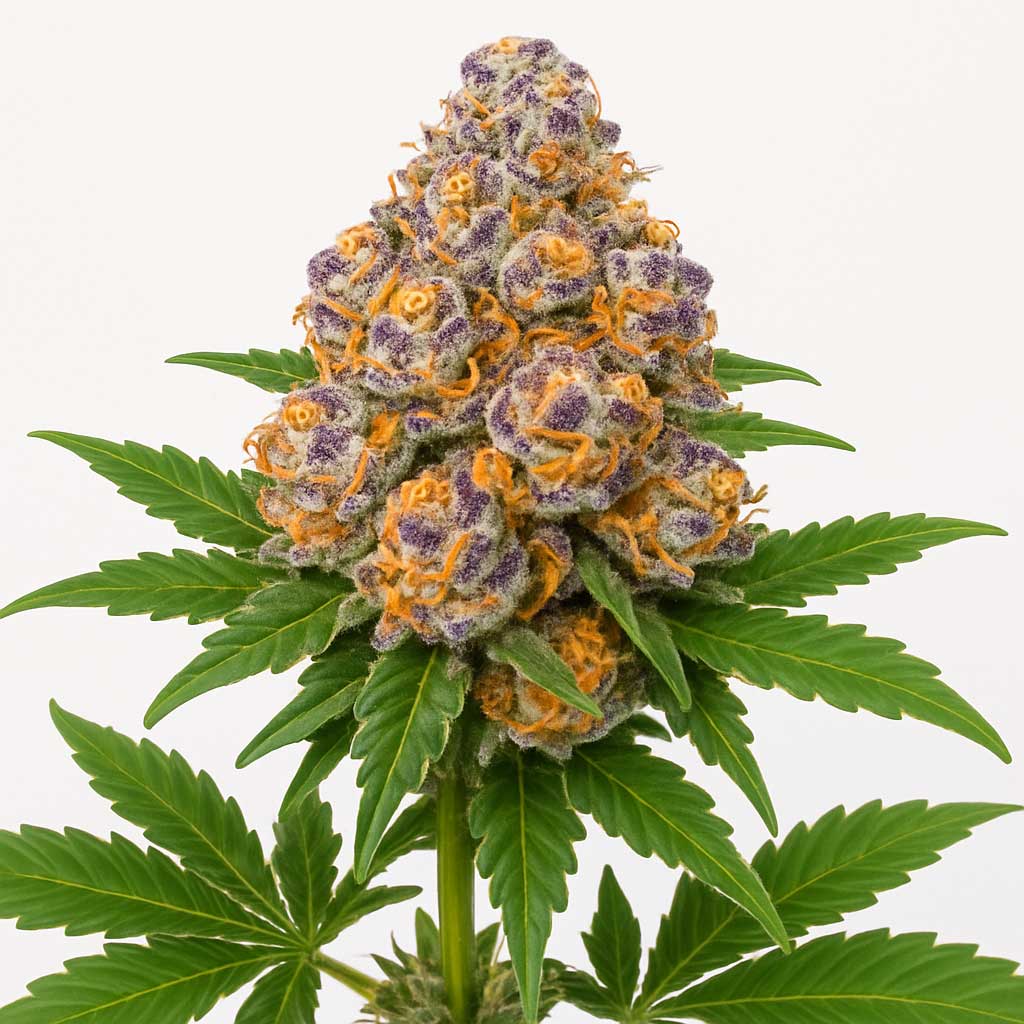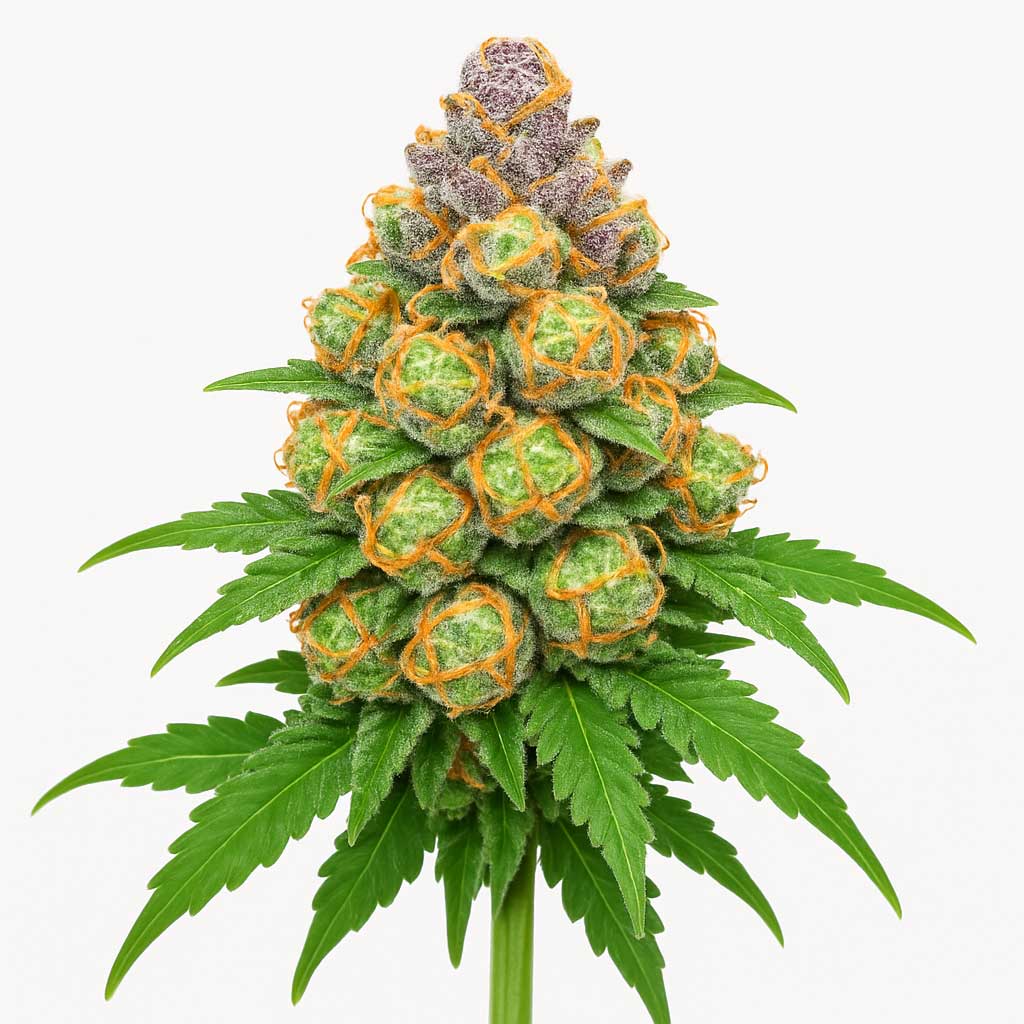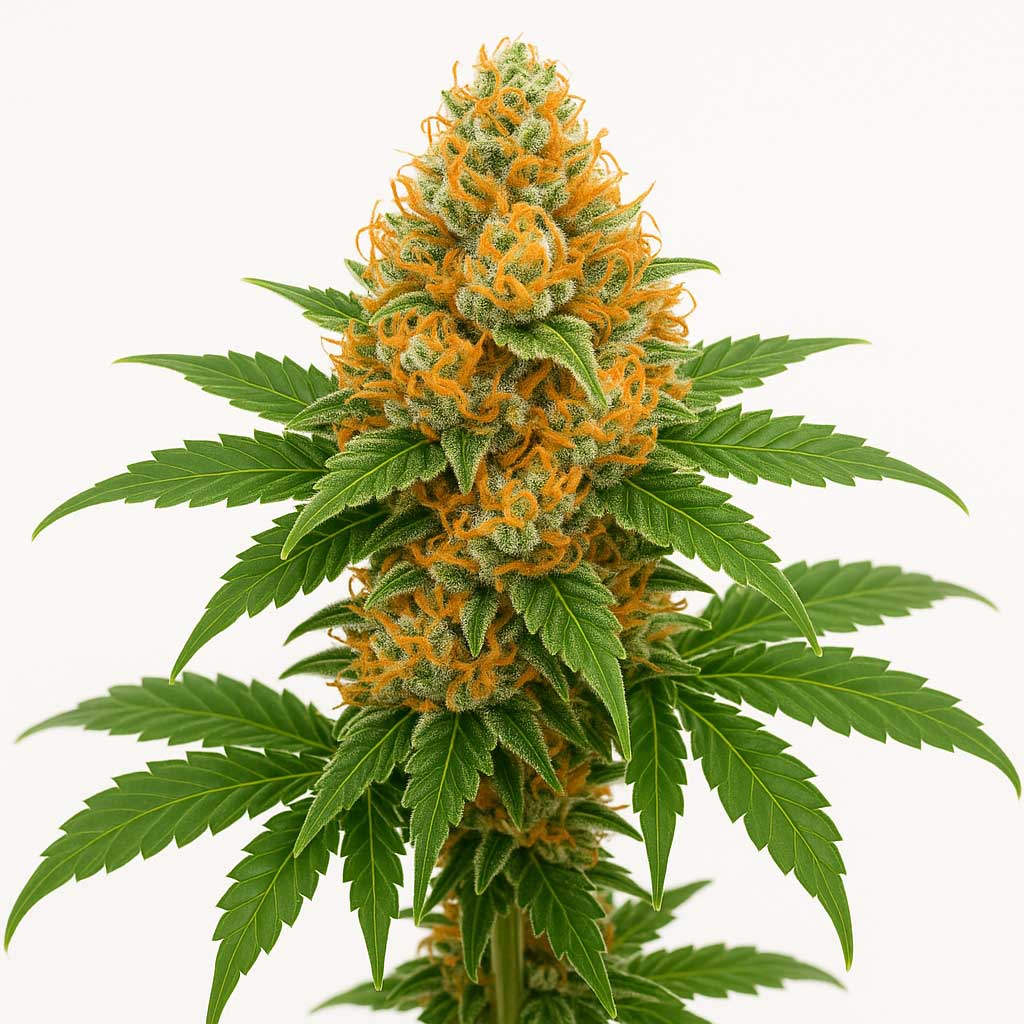Glitter Bomb (Cannabis Strain) — Strainpedia
Glitter Bomb is a high-impact Hybrid cultivar (often Sativa-leaning) derived from a cross between Grape Gas x OG Glitter Bomb. Recognized for its extreme trichome density—giving it a “glittering” appearance—and a complex, sweet-and-savory flavor profile, it is frequently referenced in horticultural education for its vigorous growth and balanced, powerful effects. The information below is intended strictly for scientific and botanical reference.
Quick Facts
| Genetics | Grape Gas x OG Glitter Bomb (Often involving Grape Pie and Cookies crosses) |
|---|---|
| Variety | Balanced Hybrid (Often slightly Sativa-leaning) |
| Flowering Time | 9–10 weeks (63–70 days indoors) |
| Yield Potential | 500–650 g/m² (High) |
| Plant Height | 110–150 cm; moderate stretch; responds well to topping |
| Climate Preference | Temperate–Controlled Indoor (Stable environment crucial for high resin production) |
| Difficulty | Intermediate (Requires effective vertical space and nutrient management) |
Scientific & Botanical Overview
Glitter Bomb plants exhibit strong vertical growth during stretch, developing dense, elongated colas. The buds are typically medium-to-large, displaying vibrant greens and deep purple hues in cooler conditions, all completely encased in a shimmering, white layer of trichomes—the source of its name. The high concentration of resin makes it an excellent candidate for extraction. The flowering period is a standard 9–10 weeks, during which the aroma develops into a pungent, complex sweet/gassy profile.
Effects & Use-Cases (Reported)
- Commonly reported effects: euphoric, uplifting, mentally stimulating, and creatively focused; followed by a smooth, deep, full-body relaxation.
- Use-case context: highly versatile; suitable for social activities and creative projects in the afternoon, or for stress relief and unwinding in the evening.
- Note: These are observational reports, not medical claims; outcomes are not guaranteed.
Aroma & Flavors
- Aroma: intensely sweet and pungent, featuring dominant notes of ripe grape soda, creamy citrus, and a sharp, underlying layer of diesel fuel and spice.
- Flavor: complex and layered, delivering sweet grape and berry on the inhale, which transitions into a lingering, savory flavor of earthy spice, pepper, and gas on the exhale.
- Terpene associations: caryophyllene (suggested dominant), limonene, myrcene.
Tested Cannabinoid & Terpene Ranges
| Compound | Typical Range* | Notes |
|---|---|---|
| Δ⁹-THC | ~25–30% | Known for high potency; concentration is heavily dependent on cultivation and genetics. |
| CBD | ~0–1% | Generally present at low, trace levels. |
| Caryophyllene | Not quantified | Implied as a major component contributing to the spice/pepper and fuel notes. |
| Limonene | Not quantified | Implied component; contributes the creamy citrus notes and cerebral lift. |
| Myrcene | Not quantified | Implied component; contributes to the earthy base and physical relaxation. |
| Terpene Profile | Complex, Sweet/Fuel | Prioritizes overall aromatic complexity and potent flavor. |
*Ranges are literature- and lab-report-informed references and can differ with environment, harvest timing, post-harvest handling, and analytical methods.
Cultivation Notes
- Light Cycle: 18/6 vegetative; 12/12 flowering
- Humidity Targets: 40–50% during flower; needs excellent air circulation to manage dense colas and high humidity from transpiration.
- Nutrition: Heavy feeder; benefits from consistent, stable nutrient delivery, especially calcium and magnesium, to support high trichome production.
- Training: Topping, LST (Low-Stress Training), and SCROG are highly recommended to manage its height and maximize the number of primary flowering sites.
- Harvest Window: Early to Mid-October outdoors (Northern Hemisphere), requires protection from early rains to maintain resin quality.
Grower Notes (Week-by-Week Snapshot)
- Weeks 1–3 (Transition/Stretch): significant stretch; aggressive training and canopy management (trellis/scrog) are necessary to control height.
- Weeks 4–6: dense flower set; perform final defoliation pass; increase P/K; monitor for nutrient burn or deficiencies.
- Weeks 7–8: peak resin and biomass accumulation; aroma is very intense; add support stakes for heavy branches.
- Weeks 9–10: ripening; initiate final flush; harvest based on trichome maturity (aim for a mix of milky/amber for balanced effects).
- Post-Harvest: Dry 18–20 °C, 55–60% RH for optimal terpene preservation.
Timelines shift with genotype and environment; prioritize plant health markers and trichome maturity over calendar counts.
Genetic Lineage
Glitter Bomb is a renowned creation, often credited to Compound Genetics, resulting from the cross of Grape Gas (a derivative of Grape Pie and various fuel strains) and OG Glitter Bomb (which typically involves high-resin Cookies genetics). This lineage was engineered to combine the intense, sweet, fruity, and gassy aromas of its parents with exceptional visual appeal—the dense, glittering trichome coating—yielding a highly potent and complex hybrid.
Research Insights
The reported versatile effects—ranging from mental clarity to deep body relaxation—make Glitter Bomb a fascinating subject for studying the entourage effect in high-THC hybrids. The combination of sweet, fruity terpenes (like limonene/myrcene) with the sharp, savory notes of caryophyllene likely creates a modulating effect that allows for both energetic social use and effective relaxation, depending on dosage and individual chemistry.
Frequently Asked Questions
Is Glitter Bomb an Indica or Sativa?
Glitter Bomb is classified as a potent Balanced Hybrid (often slightly Sativa-leaning), celebrated for its versatile, euphoric, and powerful effects that balance mental uplift and physical calm.
What does Glitter Bomb smell and taste like?
It carries an intense, pungent aroma of sweet grape soda and creamy citrus, underlined by a sharp diesel fuel and spicy earth complexity. The flavor is a mix of sweet fruit and savory gas/spice.
What are the typical effects?
Reported effects are highly euphoric, mentally stimulating, and creative, which smoothly transition into a potent, satisfying full-body relaxation.
How long does Glitter Bomb take to flower?
Glitter Bomb typically flowers in 9–10 weeks (63–70 days) indoors.
Is it suitable for beginners?
Glitter Bomb is considered Intermediate in difficulty. While vigorous, its tall structure requires diligent training, and its high nutrient demands benefit from experienced management.
Educational Disclaimer: This page is provided for scientific and horticultural reference only and does not constitute medical or promotional advice. Cannabis cultivation, possession, and use are regulated by local laws. Always comply with applicable legislation in your region.








